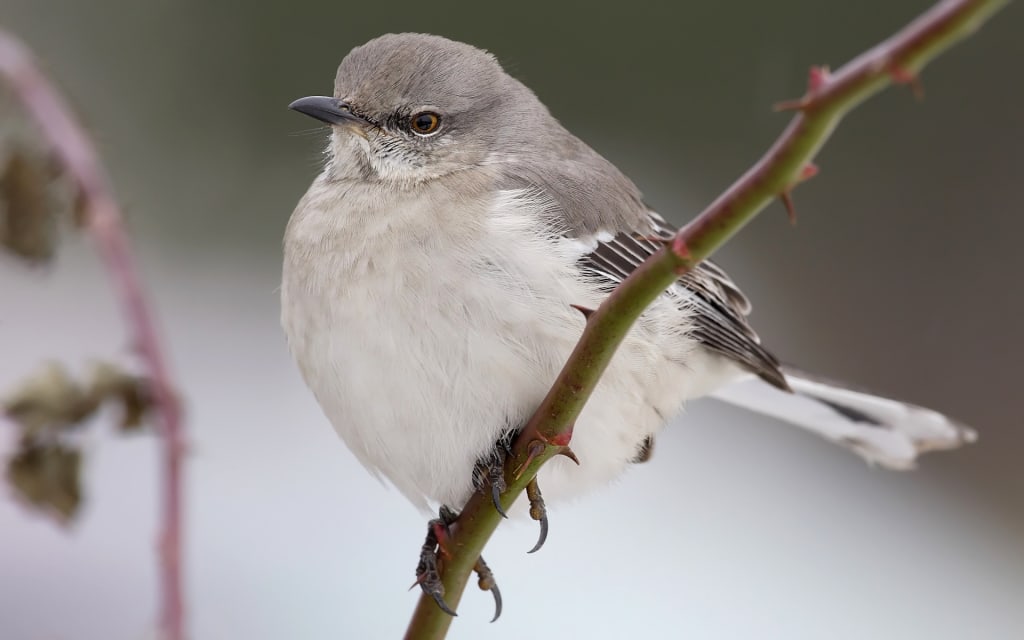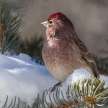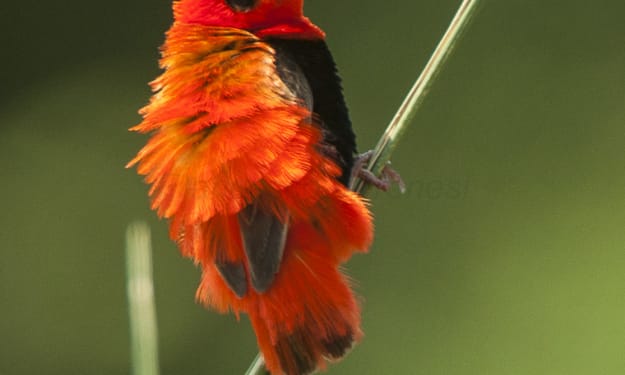
The northern beardless tyrannulet, Camptostoma imberbe is a small passerine bird within the tyrant flycatcher family. It ranges from the southeastmost Arizona and Texas in the United States, through Mexico and Central America, to Costa Rica in the northwest. The species is found in luminous cultivated and treated forest gardens. The domed nest consists of decorative fibres or leaves with side entrances. The nest has the shape of a tree branch. Typical clutch consists of two white eggs, often with rufous and lilac coloured to the larger end. Women hatching incubation lasts for 14–15 days, with another 17 days to escape. The beardless Northern tyrannulet weighs 7.5 g and is 10.2 cm long. The head is dark brown, with an erectile crown and a white supercilium. The deeper coating on the rump is light grey-green.
The wings are brown with yellow feather edging and two whitish tail margins. The tail is white, the chest is brown, the breast is yellowish, and the belly is purple. Performance is rosy. Sexes are similar and this species, particularly in the wing bars, is not as bright as the closely related Southern beardless tyrannulet, C. Obsoletum, thought traditionally similar to. But in Costa Rica the two forms differ, without interbreeding. Northern beardless tyrannulets are aggressive birds preying as vireo or warbler-like fashions on flies, spiders, and berries. The warning is a quick whistled Fleerrr, often broken up as a fleeer. The crests are raised in courtship, or the tail flickered, and an enthusiastic sound is made when shocked. Just in extreme southern Arizona, New Mexico, though Texas, and in small numbers, this tiny grey flycatcher flies through much of Mexico and Central America. It lives unobtrusively there in the riparian woodland, where this is easily mistaken for a Verdin, vireo, warbler, or Empidonax flycatcher. Based on the odd, high-pitched pee-pee or pier tones, the best way to make a distinction is by speech. The Elaeniinae's only U.S. member, the Northern Beardless-Tyrannulet, is a small subfamily of tropical tyrannide flycatchers primarily from South America. In Costa Rica its distribution overlaps slightly with a sister group, the Southern Beardless-Tyrannulet.
A vireo or warbler, as with other primitive elaeniine flycatchers, is more reminiscent of its bill shape and foraging behaviour than of a flycatcher. This tyrannulet never fly-catchs like a pewee or phoebe but instead captures and catches insects from the bark and leaves using its long, arched, vireo-like bill. "Beardless" refers to the lack of rictal bristles on most flycatchers, at the base of the tail. "Tyrannulet," a diminutive "tyrant," alludes to his brutal dismissal of possible small predators capable of preying on their babies or eggs. The Northern Beardless-Tyrannulet is in several respects a typical tyrannide: a physically monomorphic, a monogamous breeder and his son's attentive caregiver. The diminutive, drab female tyrannulet builds a complex, domed, globular, side-entrance nest.
Nests are also covered by colonies of tent caterpillars or spiders, ball moss clumps or achiote seedpods, and masses of juniper needles. The cryptic habits of the Northern Beardless-Tyrannulet may explain in part the species ' lack of study and understanding on the natural history. Brush's presence in Texas has made us understand his actions and environmentally friendly breeding. Given that lowland riparian forests favoured by the tyrannulet tend to disappear as a result of deforestation, this definition is important. Few flycatchers have bristles at the base of their bill and others call the flycatcher's "fur." As the name suggests, Northern Beardless-Tyrannulets have no bristles between their ears. The earliest recorded Beardless-Tyrannulet from northern Germany was at least four years and nine months old.
About the Creator
MB
I am a bird aficionado and really enjoy spotting them them on hikes. I greatly appreciate the variety of birds cross North America and the world. They are amazing and intelligent creatures, each so unique and with a wonderful life.
Enjoyed the story? Support the Creator.
Subscribe for free to receive all their stories in your feed. You could also pledge your support or give them a one-off tip, letting them know you appreciate their work.






Comments
There are no comments for this story
Be the first to respond and start the conversation.